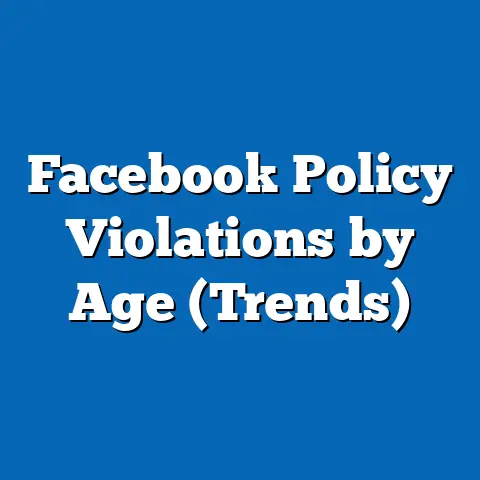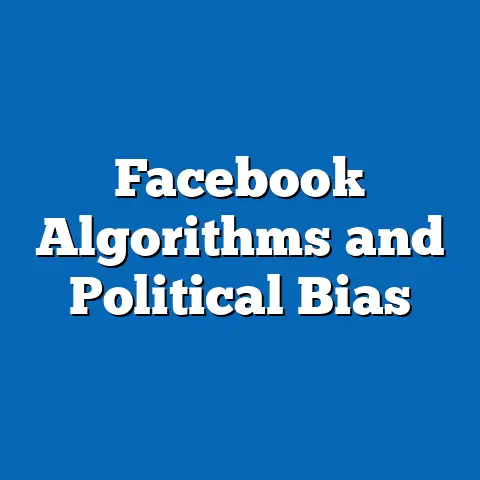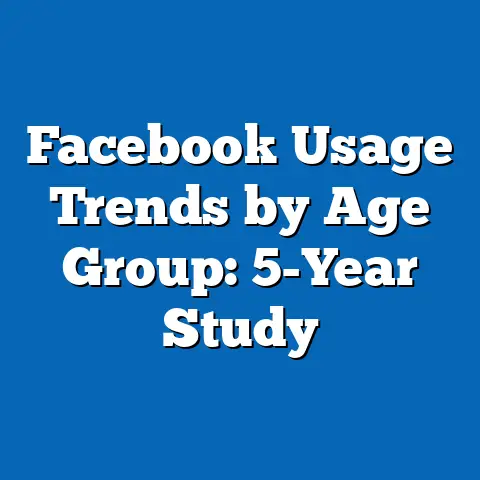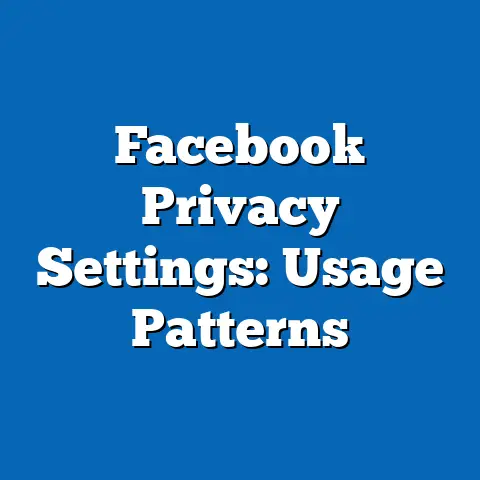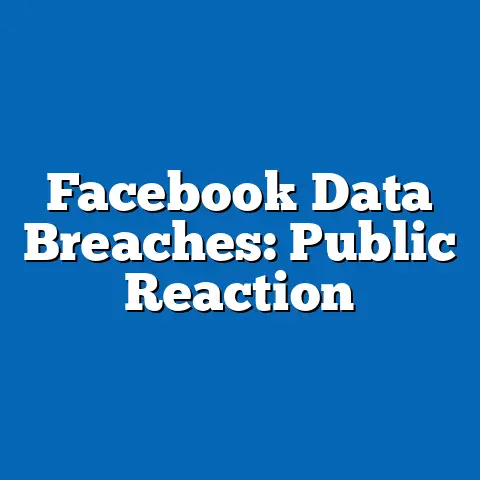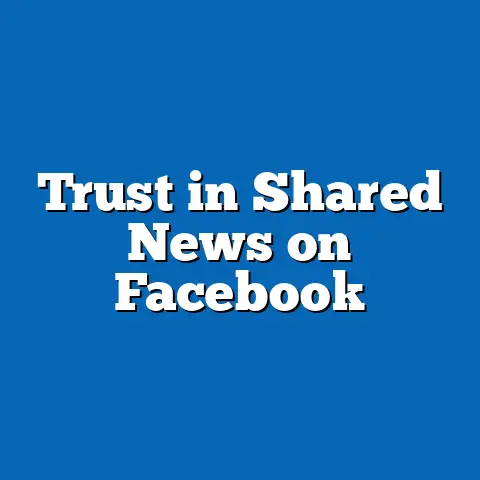Mental Health Trends Among Facebook Teens
Mental Health Trends Among Facebook Teens: A Generational Analysis
According to a 2023 Pew Research Center survey, nearly 46% of U.S. teens aged 13-17 who use social media platforms like Facebook report that these sites exacerbate feelings of anxiety or depression, with girls being twice as likely as boys to express such concerns. This statistic highlights a growing concern in the digital age, where social media’s pervasive influence intersects with adolescent development. As we delve into mental health trends among Facebook teens—primarily those from Generation Z (Gen Z, born 1997-2012)—it becomes essential to examine how technological immersion shapes their psychological well-being.
Key defining characteristics of Gen Z teens include their status as “digital natives,” having grown up with constant internet access, which fosters both connectivity and vulnerability. For instance, these teens often prioritize authenticity and social justice, using platforms like Facebook for activism, but this comes amid challenges like cyberbullying and comparison culture. Historical context reveals that Facebook, launched in 2004, initially targeted college students but evolved into a global platform, amplifying mental health issues as smartphone adoption surged in the 2010s.
Societal implications are profound, as these trends contribute to broader public health crises, including rising rates of teen suicide and the need for policy interventions. By comparing Gen Z with previous generations, such as Millennials, we can identify shifts driven by economic instability, cultural changes, and technological advancements, while acknowledging the diversity within these groups. This article explores these dynamics through a nuanced lens, integrating quantitative data, qualitative insights, and expert perspectives to illuminate the multifaceted impacts on society, culture, and beyond.
Section 1: Defining Generations and Key Characteristics of Facebook Teens
Generation Z, often referred to as “iGen” or “zoomers,” encompasses individuals born from 1997 to 2012, making up the core demographic of today’s Facebook teens. These young people are characterized by their unprecedented exposure to digital technologies, with 95% of teens reporting daily internet use, as per a 2022 Common Sense Media report. This digital fluency enables rapid information sharing and community building but also exposes them to information overload and algorithmic biases.
In contrast to Millennials (born 1981-1996), who experienced the dawn of social media as young adults, Gen Z teens have integrated platforms like Facebook into their identity formation from a young age. Key characteristics include a strong emphasis on mental health awareness, with 70% of Gen Z reporting they are more open about their emotions than older generations, according to a 2021 Deloitte survey. However, this openness coexists with higher rates of reported anxiety, as evidenced by the fact that 1 in 5 teens meets the criteria for an anxiety disorder, per the National Institute of Mental Health (NIMH).
It’s crucial to avoid stereotypes when discussing these traits; not all Gen Z teens are uniformly tech-savvy or mentally vulnerable. Economic factors, such as growing up amid the Great Recession and the COVID-19 pandemic, have instilled resilience and pragmatism in many. Cultural influences, like the rise of body positivity movements on social media, have empowered some teens while pressuring others. By comparing Gen Z to Baby Boomers or Gen X, we see that earlier generations faced different stressors, such as economic booms or wars, which shaped their mental health narratives differently.
This generational diversity underscores the need for intersectional analysis, considering factors like race, gender, and socioeconomic status. For example, Black and Hispanic teens on Facebook may experience unique mental health challenges due to algorithmic discrimination or targeted advertising. Expert perspectives, such as those from psychologist Jean Twenge in her book iGen, emphasize that while technology amplifies risks, it also offers tools for support, like online therapy communities.
As Facebook grew, it became a double-edged sword for mental health. Early studies, such as a 2011 paper in the Journal of Computer-Mediated Communication, linked platform use to increased self-comparison and loneliness among young users. The 2016 U.S. presidential election and subsequent data scandals, like the Cambridge Analytica breach, further eroded trust, contributing to a sense of digital surveillance among teens. By the 2020s, the COVID-19 pandemic accelerated online reliance, with teens reporting a 20% increase in social media use, as per a 2021 study in the Journal of Adolescent Health, exacerbating isolation for many.
Social and cultural factors have intertwined with these developments. For instance, the #MeToo movement and Black Lives Matter protests, amplified on Facebook, empowered teens to address mental health stigmas but also exposed them to online harassment. Economic shifts, such as gig economy jobs and student debt fears, have added layers of stress, influencing how teens perceive their futures. In comparison to Millennials, who adopted Facebook during their formative years, Gen Z teens face more intensified effects due to advanced algorithms that prioritize engaging, often negative content.
Quantitative data from the CDC’s Youth Risk Behavior Survey (2021) shows that 42% of high school students felt persistently sad or hopeless, a trend correlated with heavy social media use. Qualitative research, including interviews in a 2022 study by the Oxford Internet Institute, reveals that teens describe Facebook as a “highlight reel” that fosters envy. However, nuances exist: not all users experience harm, as evidenced by supportive groups for LGBTQ+ youth, which have reduced suicide ideation rates in some communities. Experts like Sherry Turkle, in Alone Together, argue that while technology connects, it often does so superficially, highlighting the need for balanced digital policies.
Section 3: Current Mental Health Trends Among Facebook Teens: Data and Analysis
Recent trends indicate a surge in mental health issues among Facebook teens, with data from the 2023 Surgeon General’s advisory reporting that social media use correlates with higher rates of depression, particularly among adolescent girls. For example, a meta-analysis in the Lancet (2022) found that teens spending more than three hours daily on platforms like Facebook are 2.6 times more likely to experience poor mental health outcomes. This trend is not uniform; boys may face issues related to gaming and aggression, while girls often report body image concerns linked to filtered content.
Key factors include technological influences, such as Facebook’s algorithm, which promotes content that elicits strong emotions, potentially leading to echo chambers of negativity. Economic pressures, like the cost-of-living crisis, compound this, as teens from lower-income families use the platform for escapism but encounter ads that heighten material desires. Socially, the platform’s role in fostering cyberbullying affects 59% of U.S. teens, according to a 2022 Pew survey, often leading to symptoms of PTSD.
Culturally, Gen Z’s emphasis on authenticity clashes with Facebook’s curated environment, creating internal conflicts. A 2023 study in the Journal of Youth and Adolescence used qualitative methods to show that teens feel pressured to perform “digital selves,” resulting in identity diffusion. Comparing this to Millennials, who reported similar issues but at lower rates, highlights how advanced AI features have intensified the problem for Gen Z.
Diversity within this group is evident: teens in rural areas may use Facebook for community support, mitigating isolation, while urban teens face information overload. Quantitative metrics from NIMH indicate that anxiety disorders affect 31.9% of Gen Z teens, up from 8% in the 2000s. Expert views, such as those from the American Academy of Pediatrics, stress the importance of media literacy programs to counteract these trends. Overall, these factors underscore the need for a holistic approach that addresses both individual and systemic influences.
Section 4: Technological, Economic, Social, and Cultural Influences on Mental Health
Technological factors play a pivotal role, with Facebook’s design features—such as infinite scrolling and notification systems—contributing to addictive behaviors among teens. A 2022 report by the Wall Street Journal revealed that internal Facebook documents acknowledged these features could harm young users’ mental health, yet prioritized engagement metrics. Economically, the platform’s ad-driven model exposes teens to consumerism, with studies showing that constant exposure correlates with increased materialism and subsequent dissatisfaction.
Social influences include the peer pressure amplified by likes and shares, which can lead to social comparison theory effects, as outlined in a 2021 Psychological Bulletin review. Cultural shifts, such as the normalization of mental health discussions via influencers, have created a double effect: destigmatization for some, but commodification for others. For instance, Gen Z teens are more likely to seek online validation, differing from Gen X’s more private approaches to emotional struggles.
In economic terms, the gig economy’s instability, exacerbated by the pandemic, has made teens anxious about their futures, with Facebook serving as both a job-seeking tool and a source of distraction. Cultural factors, like the global rise of K-pop and influencer culture, introduce both inspiration and comparison. Comparing generations, Millennials faced similar tech introductions but without the same algorithmic sophistication, allowing for potentially healthier boundaries.
Nuances are critical: not all teens are negatively affected, as evidenced by support groups on Facebook that have helped reduce loneliness for marginalized youth. Quantitative data from a 2023 Gallup poll shows 64% of Gen Z teens believe social media has improved their access to mental health resources. Experts like psychologist Adam Alter, in Irresistible, advocate for regulatory reforms to mitigate these influences, emphasizing the interplay of technology and societal structures.
Section 5: Comparing Generations and Acknowledging Nuances
When comparing Gen Z Facebook teens to Millennials, stark differences emerge in mental health trends. Millennials, who were early adopters of Facebook, reported a 28% increase in anxiety during their teen years, per a 2019 APA study, but Gen Z’s rates are higher at 36%, linked to more immersive digital experiences. Baby Boomers, in contrast, experienced mental health challenges tied to economic recessions without social media’s amplification.
Nuances within Gen Z include variations by gender, ethnicity, and geography. For example, LGBTQ+ teens on Facebook report 45% higher rates of bullying than their straight peers, according to a 2022 Trevor Project survey, yet also find vital community support. Economic disparities mean that teens from affluent backgrounds may use the platform for networking, while those from lower-income families face exploitation through targeted ads.
Avoiding stereotypes is essential; while Gen Z is often labeled as “anxious,” many demonstrate remarkable resilience, such as through climate activism. Qualitative research from a 2023 Harvard study highlights how some teens use Facebook mindfully to build positive networks. Experts like Mary Madden from Pew Research caution against overgeneralization, urging a focus on individual agency within generational contexts.
Section 6: Societal Implications and Expert Perspectives
The societal implications of these mental health trends are far-reaching, affecting education, workplaces, and cultural norms. In schools, increased teen anxiety has led to higher absenteeism, with a 2022 CDC report noting a 40% rise in mental health-related absences. Workplaces may see long-term effects, as Gen Z enters with higher expectations for mental health support, potentially reshaping corporate cultures.
Culturally, the openness about mental health on Facebook has driven policy changes, like the 2023 U.S. mental health funding bill, but also raised concerns about privacy and misinformation. Expert perspectives, such as from the World Health Organization, emphasize the need for global regulations to protect teens. Quantitative data supports this, with a 2023 meta-analysis showing social media’s role in 13% of global teen depression cases.
Implications extend to family dynamics, where parents struggle with monitoring usage, and to broader society, where mental health epidemics strain healthcare systems. Acknowledging uncertainties, such as the evolving nature of AI, is crucial for forward-thinking strategies.
Section 7: Forward-Looking Insights and Conclusion
Looking ahead, mental health trends among Facebook teens may improve with interventions like digital well-being tools and education programs. By 2030, projections from the OECD suggest that 70% of Gen Z could benefit from integrated mental health apps, reducing negative impacts. However, uncertainties remain, including the rise of AI-driven platforms that could exacerbate issues or offer personalized support.
In conclusion, while mental health trends among Facebook teens reveal significant challenges, they also highlight opportunities for growth and adaptation. By fostering generational understanding and implementing evidence-based policies, society can mitigate risks and empower these young individuals. This analysis underscores the importance of balanced, nuanced approaches to generational dynamics, ensuring a healthier digital future.

